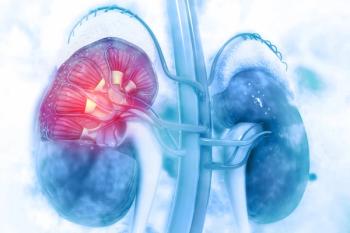
- ONCOLOGY Vol 13 No 10
- Volume 13
- Issue 10
Trichloroethylene Exposure Linked to Genetic Changes in Patients With Kidney Cancer
Many patients with kidney cancer who had been exposed to high levels of trichloroethylene have a unique pattern of genetic mutations within their cancerous cells. These findings were reported by Hiltrud Brauch, PhD, of the University of Hamburg,
Many patients with kidney cancer who had been exposed to high levels of trichloroethylene have a unique pattern of genetic mutations within their cancerous cells. These findings were reported by Hiltrud Brauch, PhD, of the University of Hamburg, Germany (currently at the Dr. Margarete Fischer-Bosch-Institute of Clinical Pharmacology, Stuttgart), and colleagues, in the May 19, 1999, issue of the Journal of the National Cancer Institute.
The authors studied 44 patients with renal cell carcinoma who had been employed in metal processing factories. At the time of their employment, trichloroethylene was widely used as a degreaser, and minimal precautions were taken to prevent workers from exposure to the solvent. An exposure level was determined for each patient by calculating the duration, frequency, and mode of exposure and by ascertaining the presence of any symptoms. Levels of exposure were classified as high, medium, and low.
Mutations in Tumor-Suppressor Gene
The researchers looked for mutations of the von Hippel-Lindau (VHL) tumor-suppressor gene in the DNA extracted from the normal and cancerous tissues of these 44 patients. Control samples from 107 patients with renal cell carcinoma but without known exposure to trichloroethylene were analyzed, and lymphocyte DNA from the 44 study subjects and 97 healthy subjects was tested as well.
Mutations of the VHL gene were found in 33 (75%) of 44 tumors of the workers who had been exposed to trichloroethylene. Among the patients who exhibited mutations, 15 had experienced a high level of exposure to the solvent and 18, a medium exposure level.
A particular mutational hot spot in the VHL gene was seen in the tumors of many of the exposed workers. This mutation was not seen in the lymphocyte DNA of the 44 workers, in lymphocytes from the 97 control subjects who did not have cancer, or in DNA from the tumors of renal cell carcinoma patients who had not been exposed to trichloroethylene.
The authors note that their findings of unique and frequent VHL gene mutations in the cancer cells of workers exposed to trichloroethylene represent the first molecular evidence of a relationship between exposure to a defined carcinogen, gene damage, and kidney cancer.
Articles in this issue
about 26 years ago
Radiation Effective in Treating Early Prostate Cancerabout 26 years ago
Participants in Chemotherapy Trials Incur Minimal Excess Costabout 26 years ago
Roswell Park Researchers Studying Health Effects of Chernobyl Accidentabout 26 years ago
Medical Records and Privacyabout 26 years ago
Radiofrequency Ablation Shows Promise for Inoperable Liver Tumorsabout 26 years ago
Axillary Dissection May Be Unnecessary for Many Breast Cancer PatientsNewsletter
Stay up to date on recent advances in the multidisciplinary approach to cancer.
































































































